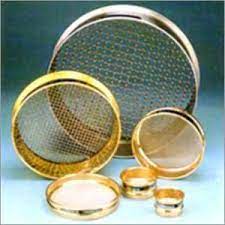Table of Contents
Introduction of size separation
Large pieces of material are usually estimated visually but difficulties arise only when powders are to be estimated. The aim of any estimation, including particle size separation, is either analytical or preparative. Size separation is a unit operation that involves the separation of a mixture of various size particles into two or more portions by means of sieving surfaces. It is performed by processes known as sieving, sifting, segregation, etc. This is a method of classifying particles into fractions based on size. Granular mixtures separate according to particle size when shaken, with large particles rising; a phenomenon termed the ‘Brazil-nut effect‘. It is well-known fact that differences in particle density affect size separation in mixtures of granular particles.
Particles of many kinds and various sizes have played an important role in development and production of dosage forms. If particles are spherical or cubical, it would be easy to characterize them. Unfortunately, most of the particles or granules in pharmaceuticals are of irregular size and shape. Therefore, various methods and techniques have been developed to characterize such particles. Particle size analysis is important in studying particle behaviour in a medium during industrial applications. Particle size analysis in various processes involves many concepts and techniques; however, this chapter is focused on the methods of particle size separation utilizing mechanical techniques.

Objectives of size separation
Particles of many kinds and various sizes play an important role in performing specific functions in the development and use of dosage forms. If particles are spherical or cubical, it is easy to characterize them. Unfortunately, most of the particles employed in pharmaceuticals are of irregular size and shape. Therefore, it is desirable to develop methods and techniques to characterize particles of irregular size and shape, and this is the main objective of particle size separation. Apart from this, the other objectives of size separation are:
- This is useful in grading powders or granules. Any solid materials after size reduction never give particles of the same size but contain particles of varying sizes. The size-reduced particles are then passed through sieves with the objective to get fractions of narrow size range.
- To control size variations in the materials. During tablet granulation the granules should be within narrow size range, otherwise, weight variation will take place during tablet punching.
- To classify materials in to different sizes for the desired purpose.
- (To enhance performance (topical powders), efficacy (powders for inhalation) and stability of dosage forms (suspensions).
- To judge uniformity in a mixing materials.
- To avoid variations in the bulk properties of materials.
- To specify the quality parameter of a intermediate and finished dosage forms.
Application
Particle size separation is important in studying particle behaviour in a medium as in many analytical sciences and industrial applications. Size separation has the following major applications in pharmacy:
(i) It has significance in formulating uniform dosage forms with respect to drug content.
(ii) It can be used to obtain granules of the required size.
(iii) It helps to ensure good flowability.
(iv) It can also be useful in separating undesirable size solids from desired ones.
(v) It has applications in the determination of particle size and their distribution in the given samples.
(vi) It can also be used to investigate the efficiency and validate size reduction equipment.
(vii) It is used to obtain monosized powders/particles which undergo the least size segregation.
Make sure check our amazing article: Pharmaceutical engineering Question bank for B pharm sem-3